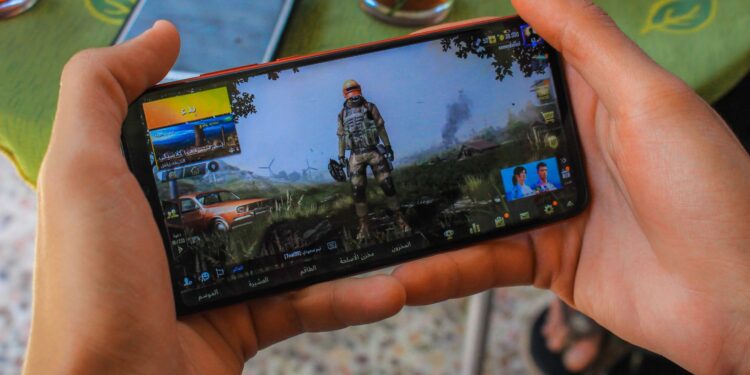Introduction
The mobile gaming industry has transformed from a casual source of entertainment into a globally recognized economic powerhouse. Over the last two decades, developers have moved beyond creating games purely for fun to establishing sustainable business models. Today, developers are focused on building apps, mastering lifecycle marketing and strategically monetizing user experience. The journey from. The shift from free downloads to revenue-generating assets represents a dynamic intersection of technology, psychology, and economics. Business strategy sits at the core of this evolution, and this article both breaks down the various models that app developers implement and highlights the benefits and drawbacks of each model.
The Various Models that App Developers Implement and Their Benefits and Drawbacks
Mobile gaming apps use a multidimensional approach to generate revenue, often combining multiple models to maximize earning potential. The most common strategies they employ the most include subscription models, in-app purchases, and advertising, practices that are especially evident in online gaming environments and sportsbooks where players bet online.
Subscription Models
This model is widely seen as the most effective for driving long-term engagement. When a subscription model is used, users pay a recurring fee to get access to exclusive benefits, an ad-free experience, or premium content. The recurring fee can be daily or weekly, but the most common fees are monthly and annual. In this model, a base version of the game might come free, but subscribing enables users to get access to special events, content updates, or permanent boosts to in-game earnings.
The benefit of this model is its straightforwardness. It builds a recurring, predictable revenue model for long-term development planning and fosters a community of loyal users. The challenges include players’ reluctance to commit to ongoing payments for a single game and the constant pressure on developers to deliver fresh, high-quality content to justify the subscription cost.
In-App Purchase
In-App Purchases are often considered the most dominant revenue model. Also known as the Freemium model, this model is incredibly effective, because it removes entry barriers for new customers. Players can download and play the game for free off the bat, but they have the option to buy enhancements and virtual goods. This approach enables rapid user base growth. Revenue then comes from a small percentage of highly engaged users, often referred to as “whales”, because of their substantial purchases. Purchases can range from cosmetic items (like character skins) to functional items such as extra lives, weapons, or resources like in-game currency. This model generates substantial revenue from both casual and dedicated players while supporting ongoing monetization across different stages of gameplay. The primary drawback is that it can create an unbalanced playing field between players who pay and those who don’t, which can lead to “pay-to-win” accusations and potential player frustration.
In-App Advertising
It is a model that can be described as monetizing the masses. It is best suited for games with a large volume of users and it offers a consistent stream of revenue. This model is perfect for developers who want to keep their game completely free without waiting on in-app purchases (IAPs). Google AdMob once stated that “ads allow developers to monetize content without charging users.” In-app ads appear in different formats. There are Interstitials, where full-screen ads appear in natural transition points, such as between game levels or, in sports games before the next half begins. There is a Banner format, which is small, static and appears at the top or bottom of the screen. There is the Native format, which is designed to look like a seamless part of the game’s interface. Finally, the most common of all the ad variants is the Rewarded Video, where players can choose to watch a video ad in exchange for in-game rewards.
This model captures revenue from the entire player base, not just paying users. A key advantage is the boost in engagement, as players choose when to watch ads in exchange for rewards. The primary drawbacks are that it can lead to high uninstall rates and that it can be difficult to find the right balance between gameplay and ad frequency. Ads can feel disruptive or intrusive if poorly implemented.
Have These Models Proven Successful?
The models have been useful in the development of the mobile gaming industry, and have helped to propel gaming apps to the top of the mobile entertainment industry.
The Freemium Model has been a huge success for many businesses and can claim responsibility for most of the mobile gaming revenue. It skillfully leverages behavioral economics, offering a free taste that often leads to paid engagement.
However, the market is highly saturated, and user acquisition can feel excessive for casual players. Developers face the ongoing challenge of balancing monetization models with overall player satisfaction. Adding to this pressure are app store fees on game revenues. Sometimes these fees can reach as high as 30%, which can take a substantial cut from total earnings.

Now, regulatory changes are reshaping how ads are measured, targeted, and aligned with privacy standards.
The evolution of mobile game monetisation reflects the intersection of innovation and audience demand. The most successful developers are those who view their game as an ongoing service, not just a one-time product. They design engaging core gameplay loops and integrate in monetization strategies, whether through strategic in-app purchases, non-intrusive rewarded ads, or valuable subscriptions that feel like a natural and rewarding part of the experience. By prioritizing long-term player value over short-term gains, they ensure their app remains both profitable and popular for years to come.









